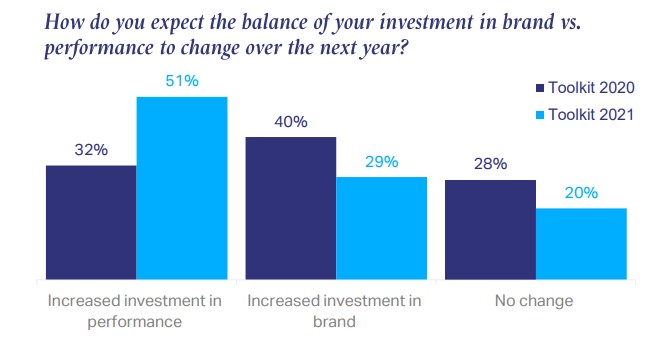Today WARC publishes a new white paper on the future of brand. Head of Content David Tiltman outlines the thinking behind it and invites participation in the debate.
This week WARC is releasing a new white paper – Rethinking Brand for the Rise of Digital Commerce. It’s a response to a growing narrative in the industry – that building brands is increasingly futile in a world of digital commerce, walled gardens, and algorithms.
In it we feature two pieces. First, James Hurman argues that the example of digital disruptors shows exactly why brand is important. Without it there is a ‘demand ceiling’ that will restrict their growth. Second, I run through some of the latest evidence (including new insight from a host of leading researchers) for how brands might still deliver an advantage in digital commerce, and how ‘brand-building’ might develop in a fast-changing media landscape.
It’s worth explaining the back story to this report – because, for me, this is one of the most fundamental questions marketers and agencies currently face.
WARC has been tracking the marketing implications of the shift to digital commerce for over a year, as the pandemic supercharged the trend towards e-commerce for a host of sectors. It’s a fascinating topic, as it touches on so many aspects of marketing – such as distribution, packaging and pricing as well as promotion.
Then, in WARC’s Marketer’s Toolkit 2021 survey, we found that the trend towards digital commerce had been accompanied by a shift away from brand-building and into performance marketing.

That was understandable given the economic impact of the pandemic. But the question became: will this money ever come back?
There are few things going on here:
- Researchers like Peter Field had already been warning about a crisis in creative effectiveness as budgets moved into ‘short-term’ work. And Peter’s work with Les Binet suggests that brand-building should be even more important for online brands than offline brands.
- But in his book Post Corona, Scott Galloway argues that we are moving from the ‘brand age’ to the ‘product age’ – an age when recommendations and convenience outweigh the power of brand. There is a sense in the tech world that brand is ‘old-school’, that companies can grow quickly without investing in brand advertising, and that brand-building in general is a fluffy and unaccountable way to spend money.
- Then there are trade-offs in the advertising budgets as marketers try to maximise exposure on the platforms to consumers actively looking for products (via Amazon search ads, for example, or the growing retail media space). There are a number of studies that show a strong presence close to the point of sale can make a difference. Dr Grace Kite refers to this spend as ‘digital rent’ – effectively a cost of selling through the platform, rather than a means to create new demand.
So there’s a lot to unpick.
The white paper runs through these issues. And while it argues that investment in brand remains a worthwhile endeavour, particularly for scale-up and mature companies, there are a few things to watch.
First is the need for greater nuance in our thinking. The way the digital platforms are developing is blurring the lines between ‘brand’ and ‘performance’ investment. A hard distinction between the two misses the ways they reinforce each other. Understanding these links will become more important.
Second, those trends mean it is finally time to ditch our assumptions around the roles ‘digital’ and ‘traditional’ media play (particularly the shorthand that traditional media builds brands and digital is for activation). New measures like ‘attention’ can help as planning tools here.
Enjoy the white paper. And as you grapple with these issues yourself, let us know which side of the debate you come down on.

